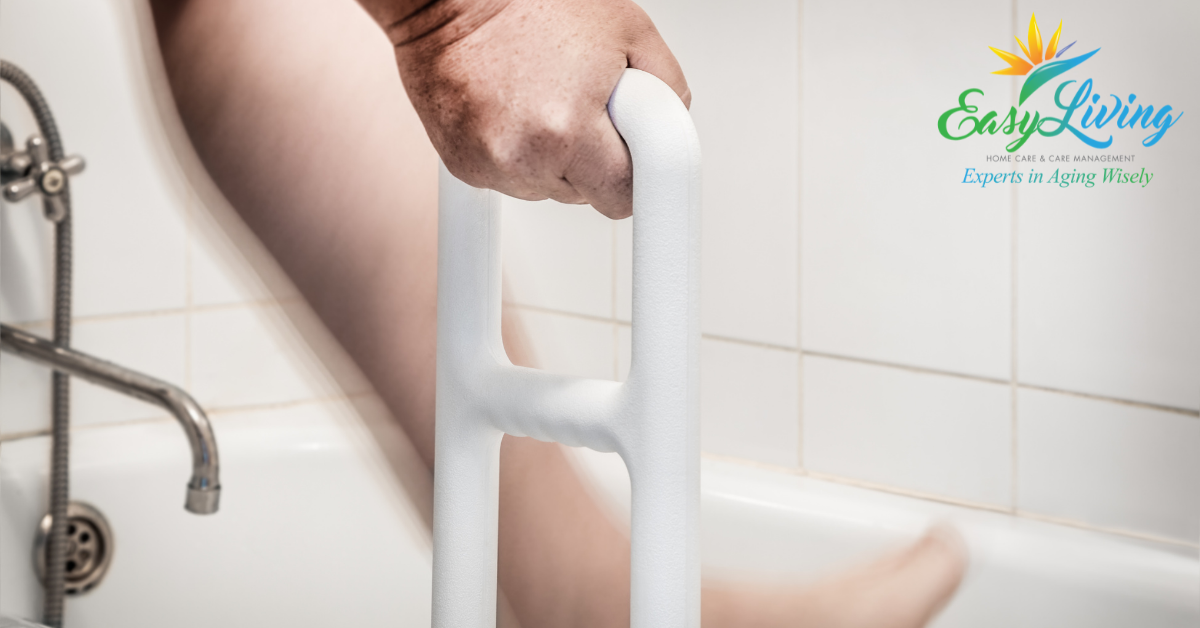The bathroom is commonly listed as the most hazardous area in the house for elderly individuals. Numerous slips and falls occur in the washroom, creating a challenging (and sometimes embarrassing) situation for families. Because so many falls occur in the bathroom, we strongly advise our clients and their caretakers to conduct a thorough safety inspection. With a new set of eyes and a few easy adjustments, the bathroom can be made safe and comfortable for everyone.
Making Showers Senior Friendly
Install solid grasp bars in the shower as well as on the walls surrounding the shower. These grab bars should be secured to the shower wall so that they can sustain the entire weight of an adult. Some portable safety handles employ incredibly powerful suction cups that are simple to attach and remove. These are great for a quick solution if you don’t have power tools available.
A shower chair is a safe solution that may be readily positioned in areas where balance is difficult.
Most medical alert buttons are waterproof enough to be worn in the shower. The shower is the leading cause of falls in the bathroom, so ensure that you always have yours on you.
Flexible handheld shower wands with an on/off switch may be more user-friendly than conventional shower heads. These are particularly beneficial when paired with shower seats.
Making Bathroom Floors Senior Friendly
Consider placing slip-resistant tape or mats on the floor of a shower or bathtub.
Be certain that bath mats are non-slip and do not present a risk of tripping.
Tips for Making Bathroom Breaks Safer
Toilets can be changed with taller, ADA-compliant raised-height ones to reduce the risk of a severe fall. On existing toilets, higher seats can also be fitted.
Standard toilets have a bowl height of approximately 15 inches, although numerous manufacturers have created models with a bowl height 1.5 inches taller. Because they are higher, these commodes reduce the strain that sitting down and getting back up can put on the body.
It is prudent to keep an extra medical alert button near the toilet so that they may seek help immediately.
Hot Water Safety Tips for Senior
Some faucet handles are difficult to grasp and turn with arthritic hands. These should be replaced with ADA-compliant faucets that are more user-friendly for elderly.
This sort of faucet includes an adjustable hot limit safety stop to prevent scorching.
This simple and inexpensive modification will make washing for older parents and grandparents more pleasant, and it’s also a perfect excuse to spruce up the appearance of your bathroom.
Organizing Bathrooms For Seniors
Consider accessible storage. Keep bathing and grooming equipment out of the way and out of the way of wheelchairs to prevent tripping and falls and to keep wheelchairs clear. Accessibility and functionality are vital when designing bathroom storage alternatives for convenience.
Large-capacity vanities with a tiny footprint can conceal hair dryers, towels, bath products, and cleaning materials, providing an uncluttered appearance that makes a room appear larger.
The top of the toilet tank is prime bathroom real estate, either on top of the tank itself or with a tiny wall-mounted cabinet.
Make it visually appealing. High-gloss paints and tiles can create an uncomfortable glare, thus matte finishes should be utilized to improve visibility. Choosing contrasting wall and floor colors or patterns is another excellent technique to boost visual sense of space and make older individuals feel more secure as they walk about the area.
These are just some of the many safety tips to keep your seniors bathroom safe.

